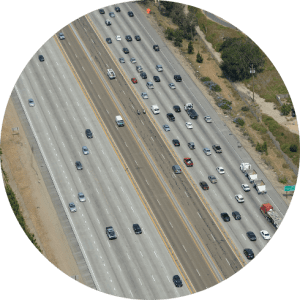Ontario’s Greenbelt Under Threat
a study on what’s at risk

YOUR NATURE, FARMLAND AND DRINKING WATER AT RISK
Ontario’s world renowned Greenbelt prevents urban sprawl and protects Ontarians’ access to local food, clean drinking water and natural areas. But as this study shows, Ontario’s Greenbelt is under threat and the Greenbelt Plan is at risk of being weakened.
In 2015, the award-winning Greenbelt and Places to Grow Plans will be reviewed by the Ontario government. These plans work together to direct affordable growth to existing cities and towns while permanently protecting nature, farmland and our water from sprawl. The 2015 review of the Greenbelt Plan is an opportunity to reduce threats and strengthen Ontario’s Greenbelt.
At the Ontario Greenbelt Alliance, our vision is for a bigger, stronger Greenbelt that protects our communities, water, forests, wildlife, and farmland and where subdivision sprawl and unnecessary development are not allowed.













Infrastructure, including new mega-highways (such as GTA West and Mid-Peninsula) and the expansion of existing highways (such as 407, 427, and 404), sewers, water and energy pipes, as well as industrial infrastructure cut through the Greenbelt and facilitate sprawl.
IMPACT:
SOLUTION:
Stop new highway development to reduce climate change impacts, and keep large industrial infrastructure out of farmland and forests. Invest in regional rapid transit to help communities develop smarter, denser housing and businesses.










Sprawl development proposals are threatening to eat up productive farmland and destroy forests and wetlands. The Greenbelt Plan permanently protects agricultural and natural land from development. Some municipalities and developers are pushing to shrink the boundaries, take land out of the Greenbelt or allow outdated development plans to go ahead which will erode the plan.
IMPACT:
SOLUTION:
Support healthy compact communities, plug loopholes and ensure municipalities comply with the Greenbelt Plan.








THREAT:
Massive amounts of excess soil excavated from industrial brownfield sites and construction projects, some of it contaminated, is being dumped on Greenbelt land. In one case alone, the equivalent of 200 Olympic-size swimming pools of fill was dumped at a rural site.
IMPACT:


Ban contaminated soil from being dumped in Ontario. We need to ensure that contaminated soil is cleaned before being dumped in the Greenbelt. Track it from construction sites and clean it.










The federal government wants to build a new and unnecessary airport on Greenbelt land. The scheme includes building new factories on the rest of the farmland and forests, valleys and natural areas that the federal government owns.
IMPACT:
SOLUTION:
Stop the Pickering airport, expand Rouge Park, support agriculture near urban areas on the federal lands and the establishment of businesses close to where people live.








According to 2013 poll, more than 90 per cent of Ontarians support the Greenbelt.The Greenbelt stops urban sprawl and improves our quality of life.
The Greenbelt provides:
  |
  |
  |
  |
  |
  |
  |
  |
= finite and priceless







